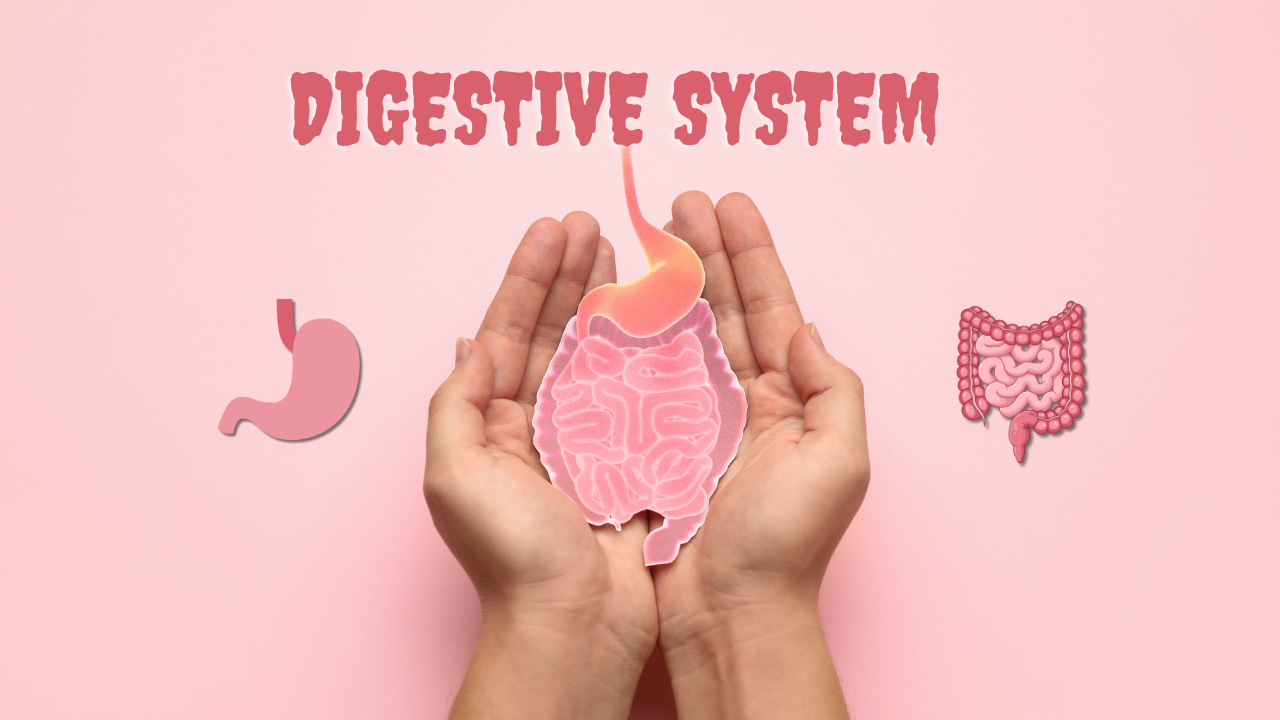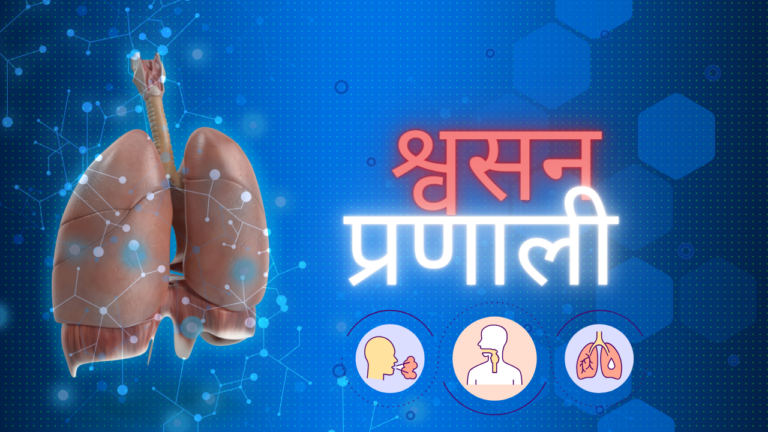DIGESTIVE SYSTEM
The Digestive System: Functions, Structure, and Process
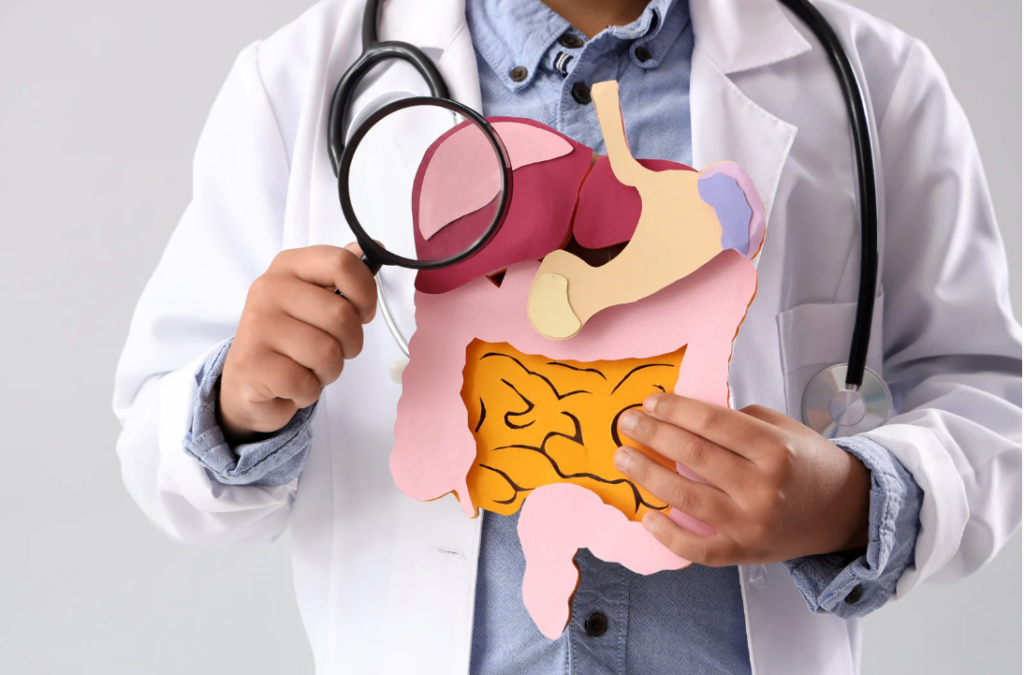
The digestive system is a complex network responsible for breaking down the food we consume, extracting essential nutrients, and expelling waste. Each part of the digestive system plays a unique role, from the mouth to the anus, ensuring that nutrients are effectively absorbed into the bloodstream to fuel the body’s functions. This article provides an in-depth look at the digestive process, covering the upper and lower digestive tracts, their structures, and how they contribute to overall health.
Understanding the Parts of the Digestive System:
The digestive system can be divided into two main sections:
- Upper Digestive Tract: Involves initial breakdowns of food, from the mouth to the liver.
- Lower Digestive Tract: Responsible for further digestion, nutrient absorption, and waste elimination, extending from the liver to the anus.
The Upper Digestive Tract:
The upper digestive tract begins in the mouth, where food is initially processed and prepared for further digestion.
1.The Mouth: Start of Digestion:
Digestion starts in the mouth, where mechanical and chemical breakdown begins. Here, various structures work in unison to prepare the food for digestion:
- Teeth: The teeth are hard, sensitive, bony structures that allow us to bite, tear, crush, and grind food. Humans typically have 28 to 32 teeth, and each type is suited for a specific purpose in breaking down food particles.
- Tongue: The tongue is a flexible, muscular organ with taste papillae, which allow us to sense different flavors. While different regions of the tongue are sensitive to different tastes, it primarily functions to mix food with saliva and shape it into a ball, or bolus, ready for swallowing.
- Salivary Glands: Three pairs of salivary glands—parotid, submandibular, and sublingual—produce saliva, the body’s first natural lubricant for food. Saliva softens the food and begins the chemical process of digestion.
The Role of Saliva
Saliva plays several essential roles in the digestive process, including:
- Lubrication: Moistening the food, making it easier to chew and swallow.
- Digestive Enzymes: Saliva contains sublingual lipase, which helps break down saturated fats, and salivary amylase, which initiates carbohydrate digestion.
- Bolus Formation: Food combined with saliva forms a bolus, a soft, manageable mass that can be swallowed.
2.Transition to the Stomach: Esophagus and Peristalsis:
Once the bolus is formed, it moves into the esophagus (or food pipe), which transports it from the mouth to the stomach.
- Esophageal Function: The esophagus uses wave-like muscle contractions called peristalsis to propel the bolus downwards. This movement is both gravity-assisted and muscle-dependent.
- Lower Esophageal Sphincter (LES): The LES acts as a valve, opening to allow the bolus to enter the stomach. This sphincter also prevents the acidic stomach contents from moving back into the esophagus.
Clinical Insight: Certain conditions may cause the LES to relax or open inappropriately, leading to acid reflux, where stomach contents irritate the esophageal lining.
3.The Stomach: A Vital Digestive Organ:
The stomach, a J-shaped muscular sac located on the left side of the abdomen, is the primary site for protein digestion. This organ functions involuntarily, meaning we have no control over its actions.
Structure and Function of the Stomach:
- Acidic Environment: The stomach has a low pH (1.5) due to hydrochloric acid (HCl), which not only aids in digestion but also has antimicrobial properties that help protect the body from pathogens.
- Enzymatic Activity: Proteins are digested in the stomach through the action of HCl and pepsin. HCl activates pepsin, which breaks proteins down into smaller chains called peptides.
- Vitamin and Mineral Absorption: The stomach releases intrinsic factor, a glycoprotein necessary for vitamin B12 absorption, and helps release iron from the food we consume.
- Chyme Formation: Through mixing and churning, the stomach transforms food into a semi-liquid substance called chyme, which is then ready for absorption in the intestines.
Clinical Insight: Drinking water with or shortly before meals can dilute the stomach’s acidic environment, potentially impacting digestion efficiency and nutrient absorption.
The Lower Digestive Tract:
After leaving the stomach, the chyme moves into the intestines, where further digestion and nutrient absorption occur.
1.The Liver and Gallbladder: Multi-Functional Organs:
The liver is one of the body’s most versatile organs, performing over 500 functions, from detoxification to enzyme production.
- Location and Structure: Positioned primarily on the right side of the abdomen and extending to the left, the liver has three lobes and the remarkable ability to regenerate. It can continue to function even if only 20% of its cells, or hepatocytes, remain active.
- Digestive Role: The liver produces bile, a substance essential for fat digestion, which is stored in the gallbladder. When needed, bile is released into the intestines, helping to emulsify fats and aiding their digestion.
2.Large Intestine and Waste Elimination:
In the large intestine, water is absorbed from the remaining indigestible food matter, and waste products are formed into feces, which are then excreted through the anus.
The Digestive Process in Action:
This intricate digestive process allows the body to extract nutrients, filter out waste, and absorb essential vitamins and minerals. Understanding each part’s role can help us make informed dietary choices, manage digestive issues, and appreciate how our body processes food.
The Digestive System: A Comprehensive Guide to Functions, Structure, and Health
The digestive system is a marvel of biology, working with precision to break down food, absorb nutrients, and eliminate waste. Each organ, from the mouth to the intestines, plays a unique role in keeping our bodies nourished and energized. Here’s an in-depth look at the major organs involved in digestion, how each functions, and their contribution to overall health.
1. Liver and Gallbladder: The Body’s “Project Manager”
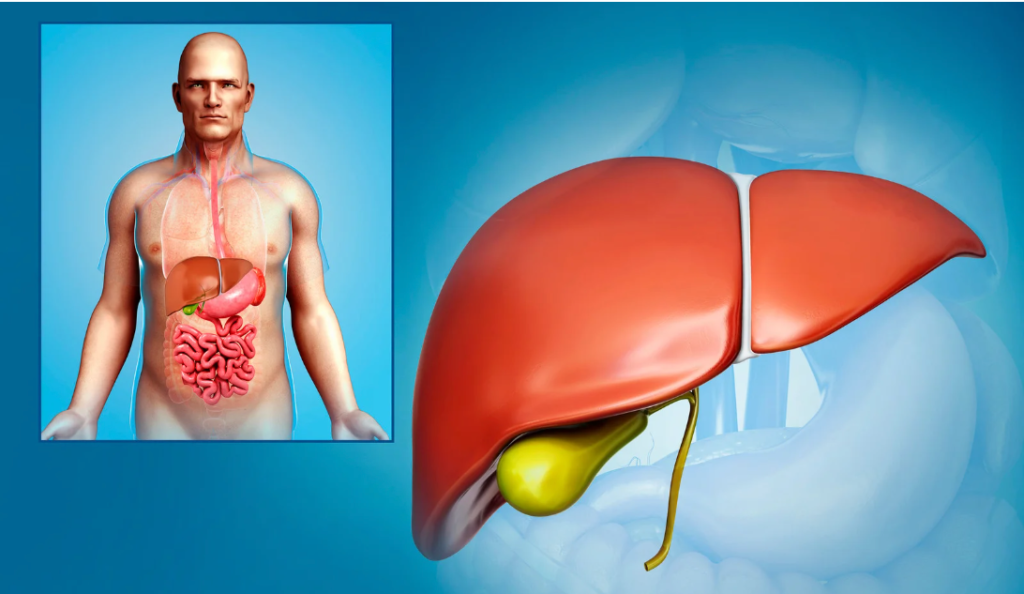
Structure and Location
The liver, located primarily on the right side of the abdomen, is a dense organ with three lobes. It can regenerate remarkably well, and even with as little as 20% of its cells, it continues to function efficiently. Connected to the liver is a small organ called the gallbladder, which stores bile produced by the liver.
Functions
The liver is the body’s “project manager,” handling over 500 tasks. These include detoxifying blood, producing essential proteins, breaking down old cells, and managing blood clotting. One of its critical functions in digestion is the production of bile, which is stored in the gallbladder and released into the small intestine to aid in fat digestion.
Health Insights
- Fatty Liver: Excess fat accumulation in the liver can impair its functions, potentially causing weight gain and other metabolic issues.
- Gallstones: Hard deposits may form in the gallbladder, sometimes blocking bile flow. Treatments range from dietary changes to surgical intervention.
2. Pancreas: The “Seat of Digestion”
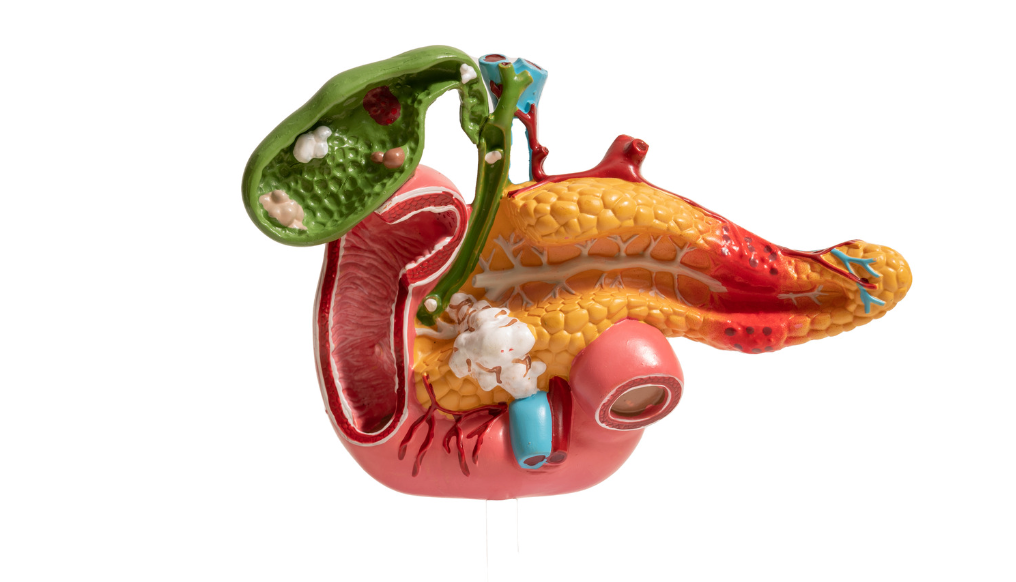
Structure and Location
The pancreas is a leaf-shaped organ positioned behind the stomach, linking directly to the first section of the small intestine (duodenum).
Functions
Known as the “seat of digestion,” the pancreas releases enzymes into the duodenum to digest macronutrients:
- Pancreatic Amylase breaks down carbohydrates.
- Pancreatic Lipase digests fats, both saturated and unsaturated.
- Trypsin and Chymotrypsin help in protein digestion.
Health Insights
- Pancreatic Cancer: Highlighted by Steve Jobs’ experience, pancreatic health is critical, as cancers in this small organ can be particularly aggressive and challenging to treat.
3. Small Intestine: The Primary Site of Nutrient Absorption
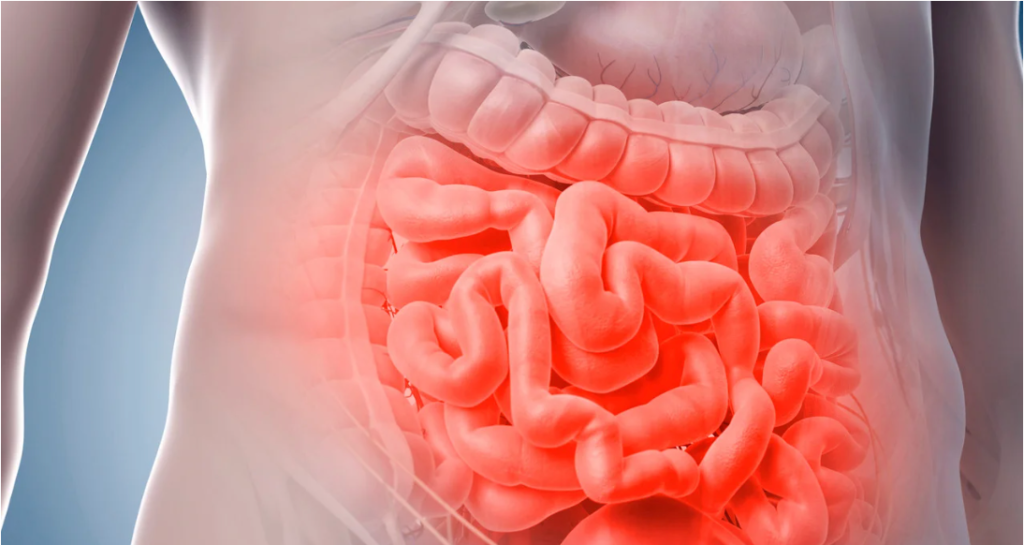
Structure and Location
The small intestine, though narrow, extends for about 3-5 meters and comprises three main parts:
- Duodenum: Finalizes digestion with pancreatic and liver enzymes.
- Jejunum: The primary site for nutrient absorption.
- Ileum: Absorbs essential nutrients, including vitamin B12, and connects to the large intestine.
Functions
The small intestine is lined with villi and microvilli, which are finger-like projections that increase the surface area for nutrient absorption. It’s also home to the gut microbiome, a diverse community of beneficial bacteria that supports digestion, immune function, and weight management.
Health Insights
- Low-Fiber Diets: Diets lacking fiber can disturb the gut microbiome, leading to digestive discomfort.
- Stress: Chronic stress weakens digestion and impacts the gut’s ability to absorb nutrients.
4. Large Intestine: Water Absorption and Waste Formation
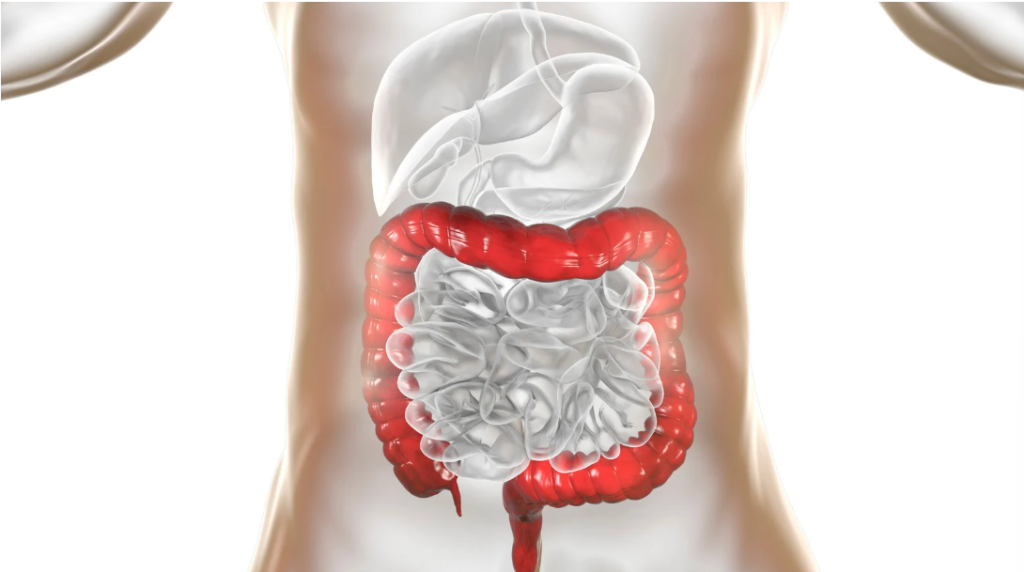
Structure and Location
The large intestine, also known as the colon, consists of the ascending, transverse, and descending sections, ending with the rectum and anus.
Functions
Upon entering the large intestine, food material is in a semi-liquid form. The colon absorbs water and minerals, forming solid stool, which is eventually excreted.
Health Insights
- Constipation and Diarrhea: Balanced water absorption is essential; inadequate absorption causes diarrhea, while too much slows down digestion, leading to constipation.
- Irritable Bowel Syndrome (IBS): IBS can disrupt regular bowel movements, causing digestive issues.
5. Appendix: The “Oil Can” of the Gut
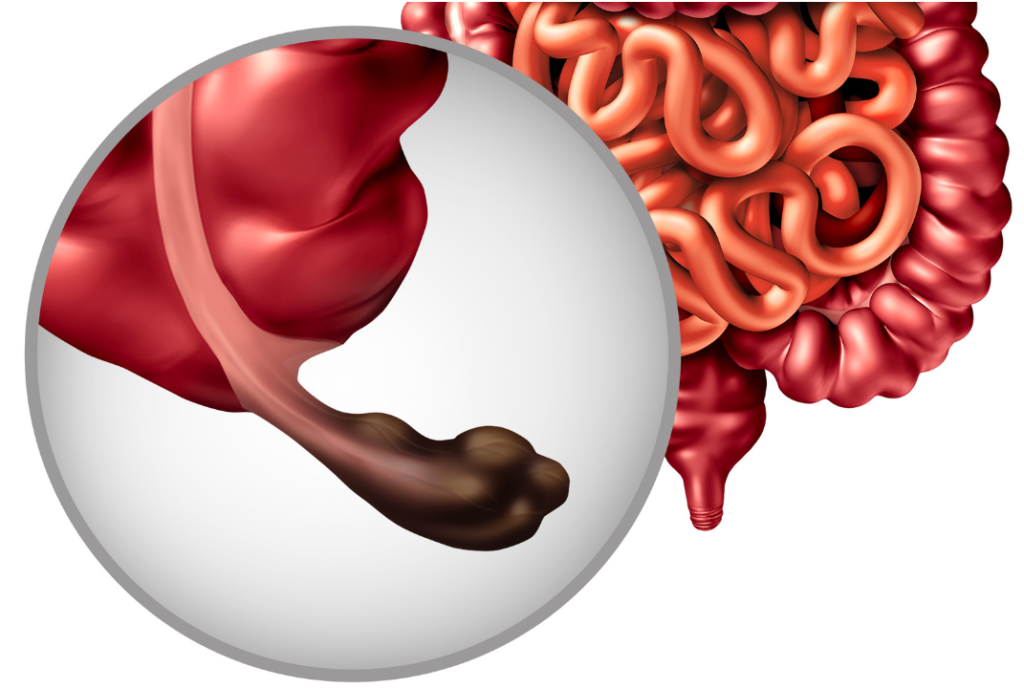
Structure and Function
The appendix is a small, tube-like structure at the beginning of the large intestine. Although its function isn’t entirely clear, it’s thought to act as a reservoir for beneficial gut bacteria, playing a potential role in immune support and maintaining a balanced microbiome.
Health Insights
Research indicates the appendix may have antimicrobial properties, helping prevent infections and support gut health.
Principles for Digestive Health:
To maintain a healthy digestive system, adopt these eight holistic principles:
- Nutrition: Eat a balanced diet with ample fiber to support gut health.
- Sleep: Quality sleep helps regulate digestion-related hormones.
- Stress Management: Lowering stress prevents weakened digestion.
- Temperance: Moderation supports overall digestive resilience.
- Exercise: Physical activity keeps digestion moving smoothly.
- Fresh Air: Oxygen intake supports metabolism and digestive function.
- Sunlight: Boosts vitamin D, essential for health, including digestion.
- Gratitude: Mindful eating and gratitude can enhance nutrient absorption.
The digestive system is essential to our health, as it transforms food into the nutrients our bodies need. By following a balanced lifestyle, managing stress, and incorporating mindful habits, we can support our digestive health, allowing it to work harmoniously for our well-being.
Naturopathy Treatments for Common Digestive and Liver Disorders

Digestive and liver health are essential to overall wellness, impacting energy, immune function, and the body’s ability to process nutrients. Naturopathy emphasizes a holistic approach to addressing these conditions, focusing on balancing body systems through diet, natural supplements, and lifestyle changes. Here, we explore some common digestive and liver disorders, their symptoms, and naturopathic treatments.
1. Mouth Ulcers (Aphthous Ulcers)
Cause: Mouth ulcers, often related to deficiencies in vitamin B12 and vitamin C, are small painful lesions that appear inside the mouth. They are usually linked to a predominant Pitta dosha imbalance, making individuals more prone to acidity.
Naturopathic Treatment:
- Oil Pulling: Use cold-pressed coconut oil for daily oil pulling to promote oral health and soothe ulcers.
- Aloe Vera: Apply fresh aloe vera gel (preferably edible) on the ulcer for quick relief.
- Diet and Lifestyle Adjustments: Consume more alkalizing foods to counteract acidity, and incorporate wheatgrass powder or tablets (2 tablespoons thrice daily or 1 tablespoon thrice daily) for nutritional support.
2. Gastroesophageal Reflux Disease (GERD)
Symptoms: Heartburn, acid reflux, bloating, and low appetite. Even with a seemingly adequate diet, individuals with GERD can often be nutritionally deficient, particularly in vitamin B12.
Naturopathic Treatment:
- Alkalizing Foods: Regular intake of alkalizing supplements like wheatgrass and alfalfa powder (1 tablespoon, 2-3 times daily) can help balance acidity.
- Herbal Decoctions: Try fennel and fenugreek decoctions (30 ml after meals) to reduce bloating.
- Mucilaginous Herbs: Aloe vera (1 teaspoon before meals) and slippery elm bark powder (1 teaspoon with 30 ml lukewarm water after meals) are soothing for the stomach lining.
- Lifestyle Changes: Exercise regularly, get sunlight, follow Mitahaara (mindful eating), and practice stress management techniques.
3. Ulcers
Cause: Ulcers are sores that form in the stomach lining, leading to abdominal pain and cramping. They are commonly triggered by excessive stomach acidity and can cause damage to the mucous lining.
Naturopathic Treatment:
- Alkaline and Fiber-Rich Diet: Eat more alkaline foods and soluble fiber to reduce acidity. Small, frequent meals can help stabilize stomach acids.
- Gastro-Hepatic Pack: This warm-cool treatment supports digestion and detoxification.
- How to Apply:
- Place a hot water bag over the abdomen, from the 4th rib to the umbilicus.
- Place an ice bag over the lower back, on the dorsal and lumbar spine.
- Wrap the abdomen with a cotton cloth and woolen blanket.
- Treat for 20 minutes daily.
- How to Apply:
- Mud Pack or Lepa: Deep soil mud, rich in magnesium and other minerals, can be applied for 30-40 minutes daily over a period of 10-15 days under supervision to avoid dehydration.
4. Hypochlorhydria (Low Stomach Acid)
Symptoms: Similar to GERD, but often with added fatigue and nutrient deficiencies. Long-term use of antacids or proton pump inhibitors (PPIs) can exacerbate this condition.
Naturopathic Treatment:
- Protein-Rich Diet: Focus on protein-rich foods to stimulate stomach acid production.
- Digestive Boosters: Take a cayenne pepper shot or lemon water before meals to naturally increase stomach acid.
- Ginger: Chew a ¼-inch piece of ginger before meals to aid digestion.
5. Fatty Liver
Cause: Fatty liver occurs due to excess fat accumulation in liver cells, resulting in poor bile production, compromised fat digestion, low appetite, and clay-colored stools.
Naturopathic Treatment:
- Fasting: Perform a low-fructose vegetable juice fast (using fresh juices from ash gourd or bottle gourd) for one day, progressing to two days once a month. This should be monitored closely by a professional.
- Herbal Supplements: Take Triphala powder (½ teaspoon on an empty stomach) to balance Pitta and Vata doshas. A blend of milk thistle, fenugreek, and green tea provides hepatoprotective and detoxifying benefits.
6. Small Intestinal Bacterial Overgrowth (SIBO) and Dysbiosis
Symptoms: Bloating, low energy, food sensitivities, skin issues, and early-onset asthma are common symptoms caused by an imbalance in the gut microbiome.
Naturopathic Treatment:
- 4-R Approach: Detoxify, repair the gut lining, replace digestive enzymes, and reinoculate the gut with beneficial bacteria.
7. Crohn’s Disease and Celiac Disease
Cause: These autoimmune disorders result in damage to the villi of the small intestine, leading to nutrient malabsorption.
Naturopathic Treatment:
- Diet Adjustments: Identify and strictly avoid food triggers. Prioritize nutrient-dense, vegetable-heavy meals with minimal grains, following an anti-inflammatory protocol.
- Clean Protein: Choose protein sources that are minimally processed.
- Herbal Support: Supplements like wormwood and turmeric (curcumin), as well as immunomodulating herbs like ashwagandha, can support immune regulation.
8. Irritable Bowel Syndrome (IBS) and Inflammatory Bowel Disease (IBD)
Symptoms: Alternating between diarrhea and constipation, IBS and IBD involve inflammation and digestive imbalance.
Naturopathic Treatment:
- 4-R Gut Healing Protocol: Remove triggers, replace lost enzymes, restore beneficial bacteria, and repair the gut lining.
- Avoid Castor Oil Packs: Due to the ricinoleic acid content, castor oil can worsen inflammation in IBS.
- Mud Pack Therapy: Effective for constipation. For time-restricted eating, avoid prolonged fasting.
9. Constipation
Symptoms: Fewer than three spontaneous bowel movements per week, with dry, hard stools that are difficult to pass. Causes include low fiber intake, stress, and lack of sleep.
Naturopathic Treatment:
- Castor Oil Packs: Help stimulate peristalsis.
- Herbal Remedies: Drink harad water in the morning on an empty stomach and incorporate magnesium-rich foods to soften stools.
- Natural Laxatives: Aloe vera juice, rich in barbaloin, provides natural lubrication, while senna leaves (¼ teaspoon in lukewarm water) can be used for short-term relief.
Final Thoughts on Digestive Health: 8 Laws of Healthy Living
Maintaining a healthy digestive system is crucial for overall wellness. By following these eight naturopathic principles, individuals can support their digestive health and address imbalances holistically:
- Nutrition: Balanced, fiber-rich foods.
- Sleep: Consistent, restful sleep.
- Stress Management: Practice relaxation techniques.
- Temperance: Avoid excess.
- Exercise: Regular physical activity aids digestion.
- Fresh Air: Promotes cellular health.
- Sunlight: Vitamin D supports immunity.
- Gratitude: Fosters mindful eating habits.
By understanding and implementing these naturopathic treatments, one can create an environment conducive to healing and long-term digestive health.
Naturopathy Treatments and Diagnostics for Gastrointestinal Health
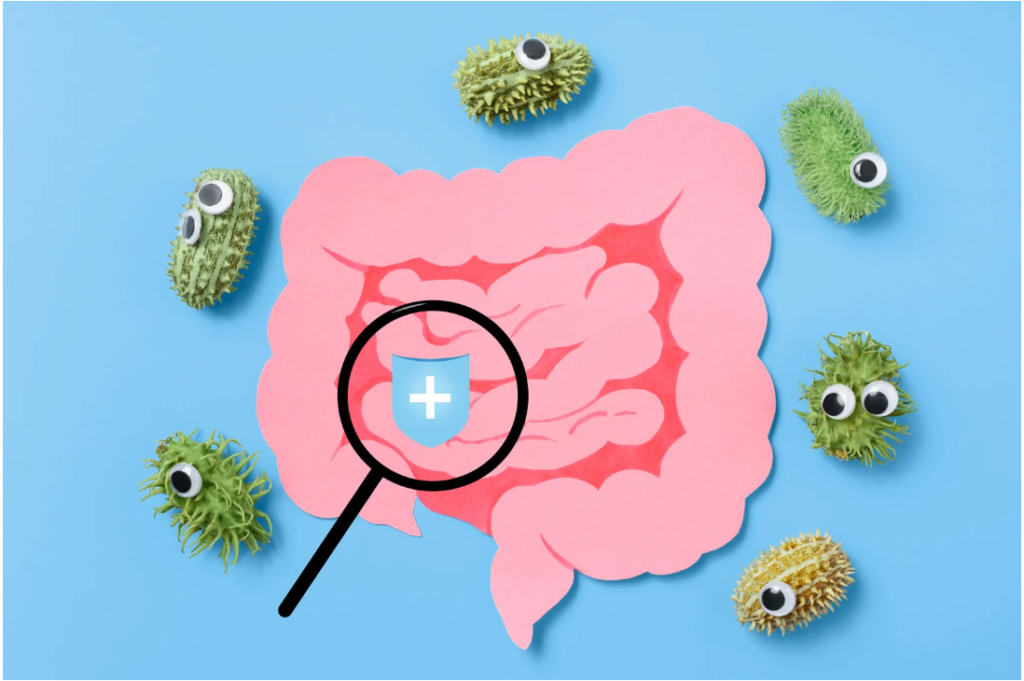
Gastrointestinal (GI) health is central to overall wellness, as it affects digestion, nutrient absorption, and detoxification. In naturopathy, GI health is approached holistically, focusing on both treatments and diagnostic tools that address root causes, balance the body, and encourage healing. Below, we explore natural therapies for GI health and effective diagnostic practices.
1. Naturopathic Treatments for GI Issues:
Naturopathic treatments for GI issues emphasize detoxification, balancing doshas, and using natural therapies to promote gut health.
Mud Pack and GH Pack Therapy
- Mud Pack: Applied to the abdomen, a mud pack helps with detoxification. Rich in minerals like magnesium, it soothes inflammation and promotes relaxation.
- Gastro-Hepatic (GH) Pack: A combination of hot and cold applications, the GH pack aids in detoxifying the liver and improving digestion.
Herbal Remedies
Naturopathy incorporates herbs with specific functions to target GI issues naturally:
- Triphala: Known for its detoxifying and balancing effects on the Pitta dosha, Triphala helps cleanse the digestive system.
- Harad: A natural laxative, Harad is helpful for constipation relief and promotes smooth bowel movements.
- Aloe Vera: As a mucilaginous herb, aloe vera soothes the stomach lining, providing relief from acidity and inflammation.
- Wheatgrass and Alfalfa: Both are powerful alkalizing agents that help neutralize acidity and reduce inflammation.
Castor Oil Pack and Senna
- Castor Oil Pack: Applied over the abdomen, the castor oil pack stimulates peristalsis, aiding those with constipation, though it is not suitable for inflammatory bowel disease (IBD).
- Senna: A short-term, powerful laxative that can be used for constipation relief but is not recommended for IBD due to its strong effects.
2. Naturopathy and Body Balance Techniques:
Naturopathic treatments also encompass lifestyle modifications, exercises, and additional supportive therapies:
Yoga and Ayurvedic Cleansing
- Surya Namaskar (Sun Salutation): A series of yoga postures, Surya Namaskar boosts circulation, supports digestion, and helps reduce stress.
- Vastra Dhauti: An Ayurvedic cleansing practice that cleanses the digestive tract. However, this should be avoided by individuals with ulcers due to its intensity.
Acupuncture
Acupuncture targets specific pressure points to alleviate digestive discomfort:
- LI4 (Large Intestine 4), ST36 (Stomach 36), REN12 (Ren Mai 12), and SP6 (Spleen 6) are acupuncture points used to balance digestion, relieve bloating, and reduce inflammation.
Hepatoprotective Herbs
For liver support and detoxification:
- Milk Thistle: Known for its antioxidant properties, milk thistle helps protect and regenerate liver cells.
- Fenugreek: Provides digestive support and enhances liver health.
Additional Nutrients
- Lemon: A natural antioxidant, lemon boosts liver function and supports digestion.
- Magnesium: Helps relax the digestive muscles, aids in nutrient absorption, and supports regular bowel movements.
3. Diagnostic Tools for Gastrointestinal Health:
Accurate diagnosis is critical in identifying and addressing the underlying issues affecting the GI system. Below are common tests used to assess and monitor digestive health in naturopathy.
Liver Function Tests
- AST (Aspartate Aminotransferase) and ALT (Alanine Aminotransferase): Measure liver enzymes, which can indicate liver damage or inflammation.
- Homocysteine: Elevated levels can indicate a higher risk of inflammation and oxidative stress, which may affect liver health.
Mineral Testing
Testing for deficiencies in essential nutrients like zinc, magnesium, and selenium is vital. These minerals play a crucial role in enzyme activity, immune response, and digestive health.
Blood Work
- Complete Blood Count with Differential (CBC): Elevations in monocytes, basophils, or neutrophils can indicate stealth infections, which may contribute to GI issues.
Antibody Testing
- Anti-Gliadin Antibody Test: This test screens for antibodies associated with celiac disease, helping identify gluten intolerance or sensitivities.
Comprehensive Diagnostic Stool Analysis (CDSAT)
The CDSAT provides an overview of gut health by analyzing:
- Microbial Balance: Identifies any imbalances or pathogenic organisms affecting the GI tract.
- Enzyme Levels: Determines if there are adequate levels for nutrient absorption.
Metabolic Profile
This blood test measures the body’s ability to digest and absorb macronutrients:
- Fat, Carbohydrate, and Protein Metabolism: It can reveal digestive inefficiencies and nutrient deficiencies.
Hydrogen and Methane Breath Test (Dysbiosis Test)
Dysbiosis, an imbalance in gut flora, often leads to digestive issues such as bloating and gas. The hydrogen breath test detects elevated levels of hydrogen and methane, which indicate bacterial overgrowth.
Imaging Tests
- Ultrasound of the Abdomen: Useful for diagnosing liver conditions such as fatty liver, polyps, or obstructions.
- Endoscopy: A direct visualization tool to assess and diagnose ulcers and other abnormalities in the GI tract.
A Holistic Perspective on Health: The Naturopathic Approach
In naturopathy, a comprehensive and integrative approach is taken to address GI issues. Diagnostic tests provide insights into the underlying causes, while treatments like herbal remedies, packs, and lifestyle adjustments help the body restore balance.
Ultimately, to be a successful physician, it is essential to:
“Think like a scientist and work like an artist.”
This philosophy captures the balance of scientific rigor and holistic intuition that naturopathy embodies, ensuring a thorough and compassionate approach to health and healing.


